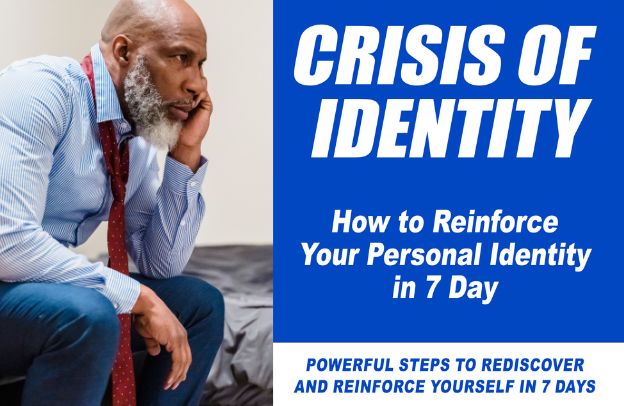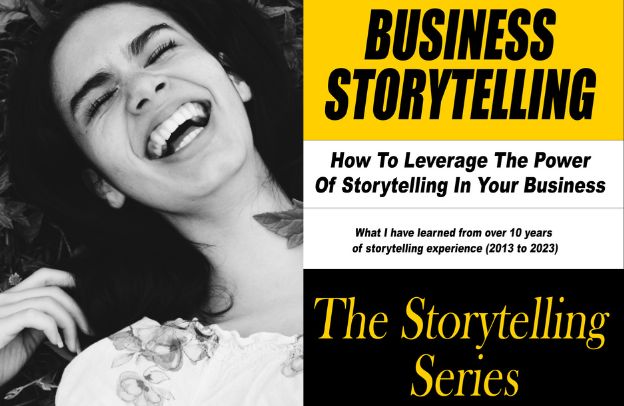Signs Of Identity Crisis – Reinforce Your Personal Identity In 7 Days

I remember my adolescent days in Uromi, my hometown in Nigeria. When the inevitable fight was about to break out—perhaps between two boys who were rivals—you might see one of them literarily beat his hand on his chest and say something like, “Do you know who I am? Do you know who I am?”
Want to learn more about storytelling? Start by downloading the first chapter of The Storytelling Series for Small Businesses.
Today’s short read is from the book, Crisis Of Identity: How to Reinforce Your Personal Identity in 7 Days and it’s available on Amazon if you want to get a copy for yourself and read along. The subtopic within the chapter is “Question of Self – Who Am I?
Sometimes, this was nothing more than a clever trick intended to scare one’s opponent off. Maybe the one who had boasted and asked the question did not have the power to beat his challenger and decided to use such a tactic, hoping it would work. In most cases, it works.
The moral of the story is this: there is nothing as powerful as the reinforcement of your potential, declaring your ability in the face of your challenges and obstacles. You might not have much, but by standing tall on your feet, your obstacles will naturally appear smaller in your eyes. You must do this if you intend to hold your position. The questions now become:
- What if you are not sure of your identity or your ability to confront your deficits?
- What if you were once sure of who you are— your identity—but something tragic happened throughout your life to weaken those beliefs? Or worse still,
- What if people have made you believe that you are nobody and unable to achieve anything of value in your life?
At this point, the “Question of Self”—who you are and what you stand for—may be difficult for you to explain. Do not worry—you have simply hit a point of reset; it is not the end of the road for you. In fact, for some, it is the beginning of a real adventure in their lives, the point after which they begin to live their authentic lives.
We will deal with this later in the book, but if I could tease you just a bit now, then it’s this: if you are no longer sure about who you are, whatever the reason, there are three steps to take:
- Assess where you are right now concerning your current self-image and identity. how you see yourself, and how others see you.
- Seek understanding by thinking back to where you come from, your history, and your past experiences before moving on to the third and final step,
- Accept where you are and your identity as it currently stands or recreate it to reflect your true self.
Now, think back to Erickson’s story. There was a time in his life when he was no longer sure of his identity and who he was. Remember that he is just like you and me or anyone else at the same stage in our lives. What did Erickson do? He assessed his state of confusion and deeply immersed himself in research, traveled across Europe, spoke to people, and dug deeper into human experiences. What he discovered is now the basis for many other studies in human phycology.
Who knows? Maybe he would not have become the world-famous psychologist he did. He might never have become the person cited across the world in arguments regarding human developmental psychology if he hadn’t had his identity crisis. So, do not see what might have happened to you as the end of your life; it can be the beginning of discovering your true self.
Note that your identity does not have to remain forever fixed. You can change what you do not like about yourself to give yourself a new beginning. If an incident happens to reveal your innermost part to you, do not run from it. Embrace it instead to make your own sense of it. The following is a quote from Jordan Peterson, a Canadian clinical psychologist that I like. I suggest you reflect upon it, too:
“The truth is something that burns. It burns off dead wood. And people don’t like having the dead wood burnt off often because they are 95 percent dead wood. Burning dead wood means shedding all the elements of you that are no longer worthy of the pursuits that you value.
As you do that, you shape yourself ever more precisely into something that can withstand the tragedy of life and act as a beacon to the world. So let the death of what is insufficient about you occur and then wait for your rebirth.”
Do you want to read the full story, check out the book page on my website – Obehiewanfoh.com.
The book and all my books are also available on Amazon so you can order your copies from there. Have a good reading and remember to share your thoughts and inspirations about the series.
Want to learn more about storytelling? Start by downloading the first chapter of The Storytelling Series for Small Businesses.







One Comment